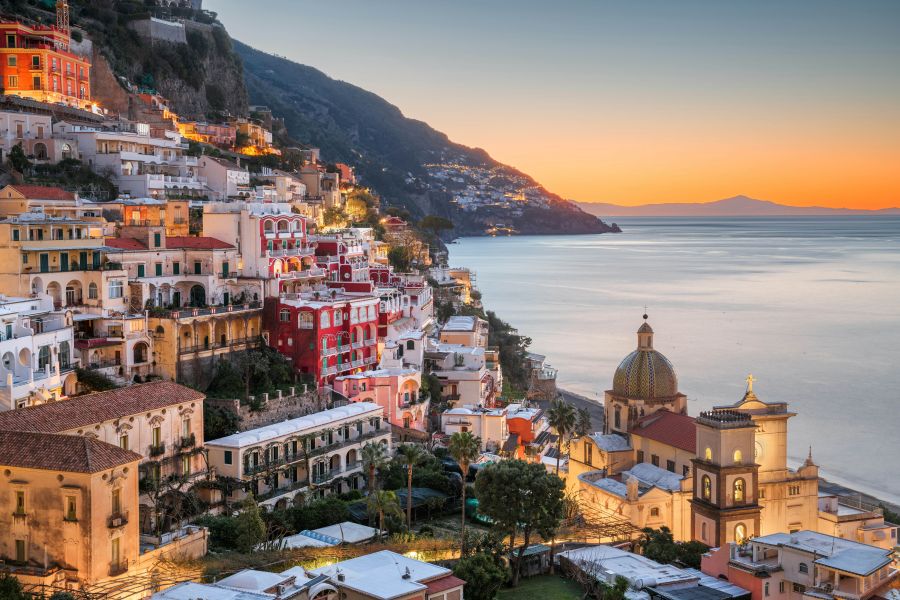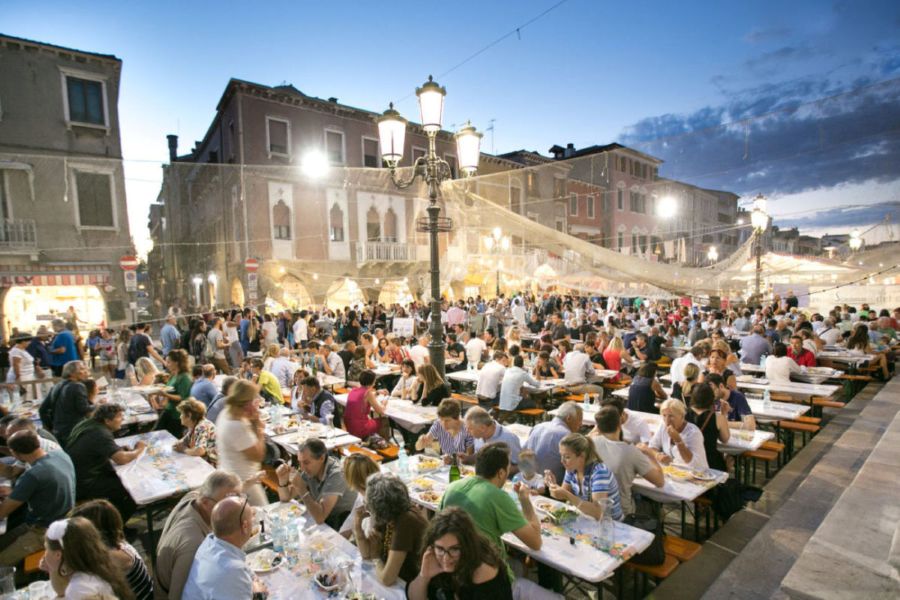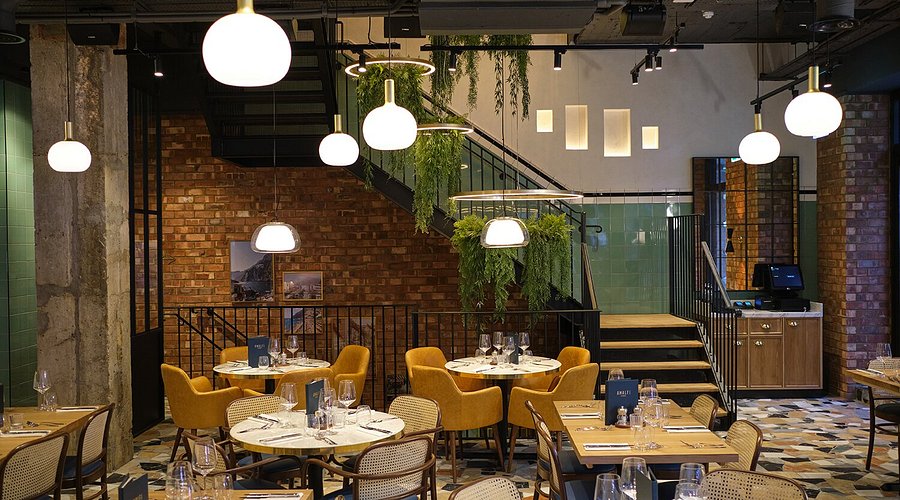
Positano vs Amalfi: 7 Key Differences to Choose Your Dream Italian Coastal Paradise
Choosing between Positano and Amalfi feels like picking a favorite between two stunning Italian gems. These charming towns along the Amalfi Coast each offer their own magic, making the choice tricky for travelers planning their dream Italian getaway.
Positano dazzles with its iconic pastel houses cascading down cliffs and upscale shopping. Meanwhile, Amalfi wins for its rich cultural heritage, lower prices, and more relaxed atmosphere. The choice really depends on what kind of experience you’re after.
Both towns serve up amazing coastal views, fresh seafood, and those picture-perfect moments that make the Amalfi Coast famous. And with each spot just a short boat ride apart, you can easily experience the unique charms of both during your stay.
Contents
- Geographical Overview
- Location on the Amalfi Coast
- Accessibility and Transportation
- Historical Context
- Evolution of Positano
- Amalfi’s Maritime Heritage
- Cultural Insights
- Art and Music Scenes
- Culinary Traditions
- Local Festivals and Events
- Tourist Attractions and Activities
- Beach Experiences
- Outdoor Adventures
- Shopping and Leisure
- Accommodation and Dining
- Hotels and Lodgings
- Best Dining Spots
- Comparative Analysis
- Positano’s Unique Offerings
- Amalfi’s Standout Features
- Frequently Asked Questions
- Which is preferable for accommodations, Positano or Amalfi?
- What are the differences in beach experiences between Positano and Amalfi?
- Can you compare the day-trip experiences offered by Positano and Amalfi?
- How do Positano and Amalfi differ in terms of tourist attractions and activities?
- What are the travel options available between Positano and Amalfi, and how long does it take?
- Which town generally offers a more authentic and less crowded experience, Positano or Amalfi?
- More Travel Guides
Geographical Overview
Positano and Amalfi sit along Italy’s stunning coastline, offering distinct geographical features that shape their character. The two towns have different layouts and transport connections that affect how visitors experience them.
Location on the Amalfi Coast

Positano and Amalfi are about 10 kilometers apart along the winding SS163 coastal road. Positano sprawls vertically up steep cliffs, with colorful buildings cascading down to the sea. Its steep layout creates a dramatic setting, but means lots of stairs and uphill walks.
Amalfi spreads out more horizontally from its harbor. The town sits in a valley between mountains, making it flatter and easier to walk around. Its main area centers around the Piazza del Duomo.
Both towns face the Tyrrhenian Sea, blessed with beautiful beaches and crystal-clear waters. Positano faces west for stunning sunsets, while Amalfi faces south with morning sun on its beaches.
Accessibility and Transportation

Getting to these towns requires some planning. Visitors can take Search Flights, Hotels & Rental Cars to Naples, the nearest major airport.
The scenic 15-minute ferry ride between the towns offers amazing coastal views. Buses connect both places to Sorrento and Salerno. The famous SS163 coastal road links them by car or bus, though summer traffic can turn the 30-minute drive into an hour.
Amalfi’s flatter terrain makes it easier to explore on foot. Positano’s vertical layout means climbing many stairs between attractions and hotels.
Both towns have limited parking. Most visitors use public transport or boats to get around the coast.
Historical Context
The coastal towns of Positano and Amalfi share deep historical roots dating back to ancient times. Both places evolved from humble fishing villages into powerful maritime centers, though their paths took different turns through history.
Evolution of Positano

Positano started as a tiny fishing village in Roman times. Ancient myths say it was founded by Neptune, god of the sea, as a gift to his beloved nymph Pasitea.
The town grew into a wealthy trading port during the Middle Ages. Ships from Positano carried silk, spices, and other valuable goods across the Mediterranean.
The Chiesa di Santa Maria Assunta stands as the town’s oldest landmark. Its stunning Byzantine-style dome covered in colorful majolica tiles dates back to the 13th century.
Pirates frequently attacked Positano in the 16th century, forcing many residents to flee. The town fell into decline until artists and writers rediscovered it in the 1950s.
Amalfi’s Maritime Heritage

Amalfi was one of Italy’s four great Maritime Republics, alongside Venice, Genoa, and Pisa. From the 9th to 11th centuries, it dominated Mediterranean trade routes.
The town’s sailors created the Tabula Amalfitana – the world’s first maritime code. They also invented the magnetic compass for navigation.
The magnificent Duomo di Amalfi reflects the town’s past wealth and power. Built in the 9th century, its Arab-Norman architecture features bronze doors cast in Constantinople.
Earthquakes and raids by pirates caused Amalfi to lose its maritime power by the 12th century. Still, its medieval street layout and buildings preserve memories of its golden age.
Cultural Insights
Positano and Amalfi offer distinct cultural experiences shaped by centuries of maritime trade, local traditions, and artistic influences. Both towns showcase their heritage through unique crafts, flavors, and celebrations that bring their streets to life.
Art and Music Scenes

Art galleries line Positano’s narrow streets, showcasing local painters and ceramic artists. The town’s artistic spirit comes alive in boutiques selling handmade textiles and leather goods. Many galleries feature seascapes and coastal scenes that capture the area’s natural beauty.
Amalfi’s art scene connects deeply to its history. Local artisans still practice traditional papermaking in historic mills. Small workshops display intricate woodwork and metal crafts passed down through generations.
Live music fills the summer evenings in both towns. Street musicians perform folk songs in Positano’s piazzas. Amalfi hosts classical concerts in its stunning cathedral, where the acoustics enhance every note.
Culinary Traditions

Fresh seafood dominates local menus in both towns. Fishermen bring their daily catch straight to restaurant kitchens each morning. Look for scialatielli pasta with clams, a regional specialty.
Limoncello production thrives in both places. Local families still use old recipes to create this bright citrus liqueur. The massive sfusato lemons growing on terraced gardens give it a distinct flavor.
Each town has signature dishes. Positano is known for its grilled fish and lemon-based sauces. Amalfi specializes in anchovies prepared in various ways, from fresh to marinated.
Local Festivals and Events

Positano celebrates the Festa del Pesce in September, serving fresh fish dishes right on the beach. The town lights up for the Luminaria di San Domenico in August with thousands of candles.
Religious festivals bring out ancient traditions. The Festa di Sant’Andrea in Amalfi features a procession carrying the saint’s statue through decorated streets.
Summer music festivals attract international artists. The Amalfi Coast Music Festival brings classical performances to historic venues. Dance shows and film screenings take place in both towns’ open-air theaters.
Tourist Attractions and Activities
Both towns offer unique attractions that showcase the best of the Amalfi Coast’s natural beauty and cultural heritage. Each destination provides distinct experiences from beaches to hiking trails and boutique shopping.
Beach Experiences

Positano’s Spiaggia Grande stands out as the main beach with its iconic colorful umbrellas and pebbled shore. The beach offers stunning views of the town’s vertical landscape and crystal-clear waters.
Fornillo Beach provides a quieter alternative just a short walk from Positano’s center. This hidden gem attracts fewer tourists and maintains a more laid-back atmosphere.
Amalfi’s main beach stretches along the marina, featuring a mix of public and private areas. The water stays calm thanks to protective barriers, making it perfect for families with children.
Outdoor Adventures

The Path of the Gods ranks as one of Italy’s most spectacular hiking trails. This ancient route connects Positano to neighboring towns through breathtaking clifftop paths with panoramic views.
Book guided hiking tours to explore hidden coves and ancient ruins along the coastline. Local guides share stories about the region’s history while leading groups through lemon groves and terraced vineyards.
Mountain biking and rock climbing attract adventure seekers to both towns. The rugged terrain creates natural challenges for outdoor enthusiasts.
Shopping and Leisure

Positano’s narrow streets buzz with boutiques selling handmade leather sandals and local fashion. The town’s signature style includes colorful linen clothing and beachwear.
Amalfi specializes in paper products, with artisan shops continuing the town’s medieval papermaking tradition. The Paper Mill Museum showcases this unique craft.
Both towns feature ceramic shops displaying hand-painted tiles and decorative items. Local artists create pieces using traditional techniques passed down through generations.
Plan your activities around the morning hours to avoid peak tourist crowds. Many shops close for afternoon breaks, reopening in the early evening.
Accommodation and Dining
Both Positano and Amalfi offer distinct lodging choices and food scenes that match different travel styles and budgets. Amalfi tends to be more budget-friendly, while Positano leans toward luxury experiences.
Hotels and Lodgings

Positano specializes in upscale boutique hotels with stunning sea views. Many properties feature private terraces and infinity pools perched on cliffs. Room rates often start at €300 per night during peak season.
Check accommodations across both towns to find the best fit. Amalfi provides more varied options, from family-run B&Bs to mid-range hotels.
Budget travelers will appreciate Amalfi’s selection of hostels and guesthouses under €100 per night. The town center location makes it easy to walk to attractions.
Families might prefer Amalfi’s more spacious rooms and apartment-style lodging. Many places include kitchenettes and living areas.
Best Dining Spots

Positano’s restaurants focus on high-end dining with spectacular views. Local seafood and Michelin-starred venues dominate the scene. Expect to pay €100+ per person for dinner at top spots.
Amalfi serves up more diverse food options. Traditional trattorias offer pasta dishes and fresh catches for €15-30 per plate. Street food and casual cafes provide quick, affordable meals.
Both towns excel at regional specialties like seafood risotto and lemon-based dishes. Small, family-run establishments often deliver the most authentic dining experiences.
Morning pastries and coffee cost less in Amalfi’s local bars. Positano’s breakfast spots tend toward fancy hotel restaurants with premium pricing.
Comparative Analysis
Both towns along Italy’s stunning coastline offer distinct experiences. Positano caters to luxury travelers seeking romantic views, while Amalfi draws visitors with its rich history and more authentic Italian atmosphere.
Positano’s Unique Offerings
Positano stands out with its picture-perfect scenery and pastel-colored buildings cascading down the cliffside. The town’s narrow streets wind through fashion boutiques and art galleries, perfect for upscale shopping.
The beaches here are smaller but more exclusive. Spiaggia Grande, the main beach, offers stunning views of the town’s vertical landscape. Beach clubs provide comfortable loungers and top-notch service.
Dining spots in Positano focus on high-end experiences. Many restaurants feature terraces with sweeping sea views, making them ideal for romantic dinners. Expect to pay premium prices – a meal for two can easily reach €100 or more.
Amalfi’s Standout Features

Amalfi’s town center buzzes with local life and authentic charm. The stunning Duomo di Sant’Andrea dominates the main square, showcasing the town’s historical importance as a maritime republic.
The town offers better value for money on accommodations and dining. Local restaurants serve traditional dishes at more reasonable prices, with many family-run establishments offering daily specials.
Amalfi’s main beach is larger and more accessible than Positano’s. The public areas are spacious, making it easier to find a spot without paying for beach club services.
Frequently Asked Questions
These common questions help travelers choose between the charming coastal towns of Positano and Amalfi based on their specific needs, preferences, and travel style.
Which is preferable for accommodations, Positano or Amalfi?
Amalfi offers more budget-friendly options and a wider range of places to stay. Many hotels and guesthouses sit close to the town center with easy access to shops and restaurants.
Positano features luxurious hotels with stunning sea views and private terraces. The steep hillside location means most accommodations require climbing lots of stairs, yet reward guests with breathtaking vistas.
What are the differences in beach experiences between Positano and Amalfi?
Positano’s main beach, Spiaggia Grande, has dark sand and striking views of the colorful buildings climbing up the cliffs. The beach clubs rent chairs and umbrellas for a more comfortable experience.
Amalfi’s beach is pebbly with clear blue waters perfect for swimming. The Marina Grande beach sits right in front of town, making it convenient to grab lunch or gelato between sunbathing sessions.
Can you compare the day-trip experiences offered by Positano and Amalfi?
Amalfi serves as an ideal base for exploring nearby towns like Ravello and Atrani. The central location makes it simple to catch ferries and buses to other destinations.
Positano works better for boat trips to Capri and the Li Galli islands. Local companies offer scenic coastal cruises that showcase the dramatic shoreline.
How do Positano and Amalfi differ in terms of tourist attractions and activities?
Positano focuses on shopping, with boutiques selling local fashions and handmade sandals. The Church of Santa Maria Assunta stands out with its majolica-tiled dome.
Amalfi features more historical sites like the Cathedral of St. Andrew and the Paper Museum. The town square buzzes with activity and hosts cultural events throughout the year.
What are the travel options available between Positano and Amalfi, and how long does it take?
The SITA bus connects both towns along the scenic coastal road. The journey takes about 45 minutes, with buses running every hour during peak season.
Ferry service operates between April and October. The boat ride takes 30 minutes and offers amazing views of the coastline.
Which town generally offers a more authentic and less crowded experience, Positano or Amalfi?
Residents go about their daily life in Amalfi, maintaining more of its local character. The side streets away from the main square feel less touristy.
Positano gets very crowded during peak season. The town caters more to tourists, though early morning and evening walks reveal glimpses of authentic Italian life.



